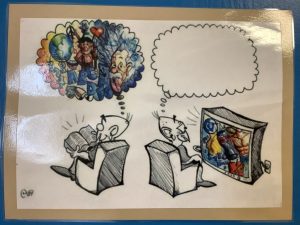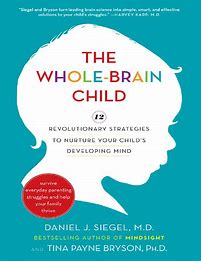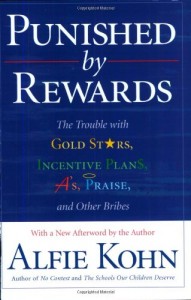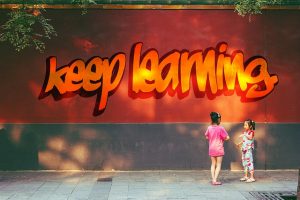As I have often mentioned on the weekly emails, it is important to have dialogues with your child about what they have been learning in class. The weekly summaries are highlights of what we have been doing at school and the terminology that I use in class to help as conversation starters between you and your child. In class, I always tell the students that everything I teach is for a reason and if they are unclear of that reason, they need to ask. My lessons are not only connected to previous lessons, but are relatable to the world around them, creating an anchor to the concepts I have been teaching. In essence, these create a foundational skillset to what I teach and to the things they will learn throughout their lives. Relating what I teach to the world around them helps them integrate their learning and propel them forward and become lifelong learners. Learning can happen anywhere and you have to be ready to embrace those opportunities. However, if you are unaware and are not open to those opportunities, that opportunity to learn something will vanish. We need to nurture that sense of curiosity and a sense of wonder by encouraging our kids to embrace them. There is no magic fairy that transforms that curiosity. Therefore, it needs to be nurtured.
In addition to helping our children become lifelong learners, there are a few other reasons conversations with your children are important. Please keep in mind that when they are talking, it is important listen to them attentively so you can ask for clarification or ask them to elaborate on their thoughts. Our brains can only do one thing well at a time. If we are doing more than one thing at a time, it means that we are not doing anything well. Please note: if you expect your child to pay attention to you, it is only fair that you reciprocate and model the behaviour your would like to see yourself.
Firstly, the conversations can help your child solidify their learning. If your child is able to talk about what they did and learned at school, this will help them to sort through the information as they explain their thinking and their learning. By being able to explain, reiterate the ideas of the lessons, and make connections to the world around them means that they have understood the concept. I have provided recaps and photos of the lessons to help give some background information.
Secondly, conversing with family helps your child develop and strengthen their oral language skills through expressing and communicating their thoughts. We have to remember that parents were the first teachers the children had and parents continue to be those teachers who are an important resource to what each child learns. When children are conversing with family, they are learning to organize their thoughts and ideas so they can articulate what they want to say.
Thirdly, having to organize their thoughts requires integrating the vocabulary and all of the knowledge they have. By articulating their thoughts, they are developing their skill of elaborating on details, incorporating parts of speech such as nouns, verbs, adjectives, and adverbs. All of these ultimately help with the writing process, as writing is essentially putting thoughts down on paper. The better we become at articulating our thoughts, the stronger we become as writers.
Fourth, conversing with others and having to organize their thoughts before speaking helps with the writing process. When children listen to others speak, especially adults, they are usually listening to experienced oral speakers use the correct syntax and vocabulary. Hearing the correct sentence structure helps the children transfer that to their own writing and reading. The more they practice conversing with others, the better writers they will become.
This skill of communicating thoughts and ideas does not magically happen. It has to be nurtured, developed, and practiced. By instilling this at a young age, children will be able to strengthen this skill as they grow older, and as mentioned above, strengthening their writing skills. Acquiring new knowledge happens to each and every one of us. Knowledge does not happen through osmosis. As adults, we tend to engage in conversation with others by inquiring and having meaning back-and-forth dialogue about the topic. However, this skill of engaging in conversation happens naturally because it is something that we have been doing for a long time. Keeping this in mind, we need to help children do the same. Moreover, this ability to discuss thoughts and ideas helps us to apply and extend our learning to the world around us. Through dialogue, the knowledge becomes grounded by helping us to connect to the things we already know. Finding the connections and relationships between concepts and ideas help to bring a relational aspect to that knowledge. For example, multiplication is not different from addition. In fact, addition and multiplication are significantly intertwined as multiplication is ‘quick way of adding the same number’. Multiplication is a progression that is extended from addition and understanding the progressions that occur between addition and multiplication helps us to solidify that knowledge. From there, multiplication can now be recognized as the basis of many other concepts such as fractions, percentages, ratios, proportions and so on. Again, discussion helps us to integrate what we know to what we are learning. This is where reflecting and critical thinking skills are happening, expanding on the confidence and gaining a sense of wanting to learn more, which is the ultimate goal of lifelong learning.
 This picture is posted on my door. It is how reading uses our imagination, but television and other technology stifles creativity and imagination where everything is presented.
This picture is posted on my door. It is how reading uses our imagination, but television and other technology stifles creativity and imagination where everything is presented.

 The saying “Life is a journey” is often used when talking about our experiences and our learning. In order to make some understanding about this statement, we need to figure out what each word means. As I mentioned in the December 1 blog post, as parents, we have a difficult but rewarding job of nurturing our children so they will develop into responsible, contributing members of the society they will be a part of. That nurturing that takes place up to the age of 18 (when children become adults), and is crucial in helping them navigate their world in the remaining years of their lives. As our parents provided those nurturing years for us, we are now doing the same for our children.
The saying “Life is a journey” is often used when talking about our experiences and our learning. In order to make some understanding about this statement, we need to figure out what each word means. As I mentioned in the December 1 blog post, as parents, we have a difficult but rewarding job of nurturing our children so they will develop into responsible, contributing members of the society they will be a part of. That nurturing that takes place up to the age of 18 (when children become adults), and is crucial in helping them navigate their world in the remaining years of their lives. As our parents provided those nurturing years for us, we are now doing the same for our children.